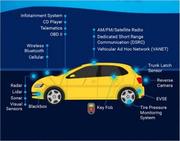
Northwest Engineering and Vehicle Technology Exchange (NEVTEX)
coccweb.cocc.edu/bemerson/NEVTEXGlobal/NEVTEXMain.html
The rapid adoption of Electric Vehicles (EVs) nationwide has necessitated a substantial increase in skilled EV technicians across various transportation sectors. With EV sales surpassing 10% of light-duty vehicles in 2021 and projected to reach between 17% and 36% by 2030, there is a pressing need for a well-educated technician workforce to service these vehicles. The NEVTEX Next consortium aims to address this demand by expanding EV technician training to 15 two-year college automotive programs across the United States. Focused on serving minority, female, low-income, and rural students, the initiative seeks to create and test a model with four key objectives, including the establishment of new certified EV technician programs, the promotion of a national EV certification, training automotive instructors, and implementing strategies for diverse student recruitment and retention. This comprehensive approach aims to build a sustainable pipeline of certified EV technicians, addressing the growing national need for skilled workforce in the EV industry.







